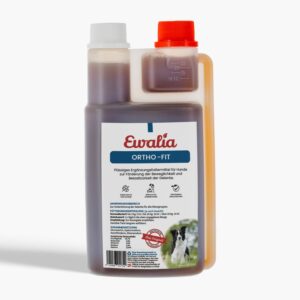Wir möchten darauf hinweisen, dass wir keine Heilversprechen abgeben. Unsere Tipps und Empfehlungen geben lediglich die Informationen wieder, die bestimmten Produkten, Pflanzen oder Methoden nachgesagt werden. Zudem weisen wir darauf hin, dass angegebene Rabattcodes werblichen Charakter haben.
2020-01-04 2.632645 2.074889 0.913578 0.124536
2020-01-05 2.464192 1.882602 0.793610 0.067086
2020-01-06 2.425209 1.841966 0.781690 0.063192
2020-01-07 2.426327 1.829478 0.778284 0.063636
2020-01-08 2.969195 2.053163 0.970818 0.152439
2020-01-09 2.734754 1.962272 0.892641 0.118825
2020-01-10 2.434422 1.715509 0.792480 0.046873
2020-01-11 2.433444 1.663297 1.122321 0.268875
2020-01-12 2.433202 1.679307 1.128561 0.278887
2020-01-13 2.789005 1.886755 0.983223 0.157898
2020-01-14 2.522257 1.764513 0.882261 0.097263
2020-01-15 2.432901 1.671232 1.125399 0.272759
2020-01-16 2.432814 1.671029 1.126548 0.274918
2020-01-17 2.432809 1.670939 1.126801 0.275470
2020-01-18 2.432809 1.670939 1.126477 0.275171
2020-01-19 2.768457 1.916899 1.007609 0.162655
2020-01-20 2.495131 1.842892 0.944220 0.137009
2020-01-21 2.476011 1.833352 0.935217 0.133525
2020-01-22 2.432790 1.668693 1.126172 0.275875
2020-01-23 2.432782 1.668630 1.126086 0.276038
2020-01-24 2.432779 1.668599 1.126053 0.276074
2020-01-25 2.432779 1.668599 1.126053 0.276072
2020-01-26 2.760677 1.969954 1.617796 NaN
2020-01-27 2.842697 2.086758 1.671448 NaN
[27 rows x 4 columns]
Now we can plot all four time series. However, like before, to make the plots more informative, I first determine the mean for all but the latest (unobserved) value, which serves as an indicator of the mean after 27 observations. Then, I plot all the time series with the mean as the horizontal line.
means_predicted = [df[[serie]].mean().values[0] for serie in series]
ax.plot(df["S1"])
ax.plot(df["S2"])
ax.plot(df["S3"])
ax.plot(df["S4"])
ax.set_xticks(df.index)
ax.plot(df.index, means_predicted, linestyle="--", c=(0, 0, 0, 0.4))
ax.legend()
fig
As you can see the mean serves its purpose. Over the 27 periods, the series starts at a high value, dips slightly, then rests in a zone above the mean, and finally has an upward trend. There is variation between the series and there is no explainable reason to treat one as series alone, but for forecasting, I do just that.
There is only one period that has the information of the COVID-19 outbreak. I provide #context for it, anyway, the real world never follows what we wish it could do.
Methodology
The paper has some ideas on how to deal with uncertainty. The Note takes the lower bound of the confidence interval, and I use some factors. Namely:
At 0.12, the midpoint of the S3 interval, the factor is 1.0
As X approaches X upper bound (infinity)
At X upper bound - 2, the factor is 1.25
At X upper bound - 1, the factor is 1.15
At X upper bound - 0, the factor is 1.0
At X upper bound + 1, the factor is 1.05
At X upper bound + 2, the factor is 1.10
At X lower bound + 1, the factor is 0.95
At X lower bound + 2, the factor is 0.90
At X lower bound + 3, the factor is 0.80
I first apply the factors to all series in the period before the COVID-19 outbreak. Then I repeat the process for the full forecast.
Forecast
After determining the multiples using factors, the next step is to compute the forecast. As a quantile is the output of a function of all incoming multiples, the absolute error is also a function of all incoming multiples.
I am going to quantify the concept of "too uncertain" in two way:
The maximum median multiple is not monotonically decreasing over the forecast periods.
For all available ex post forecasts, the real value is never a multiple of any forecast, regardless of whether it is an ex post period or a real one.
As with R, I have simplified activity report. Instead of running a report that displays a list of realisations that violate the two criteria, I compute all ex ante forecasts quartiles and for the least expensive series, I show each multiples' relative error to the quartile.
I take the following steps:
I check the validity of the forecast. The last part is the median. While visiting at t_{i}, the maximum expected multiple is less than 9.
I check the sets obtained by using the prior two and the mid-3 and the fourth quartiles.
I check to see if the maximum median multiple is not monotonically decreasing over the full forecast.
I repeat the procedure for 20 different series.
Haftungsausschluss: Unser Ziel ist es, Dir sorgfältig recherchierte und präzise Informationen zur Verfügung zu stellen. Wir kombinieren dabei unsere eigenen Erfahrungen mit einer umfassenden Analyse von Herstellerangaben, Kundenrezensionen sowie Bewertungen anderer Websites. Unsere Artikel und Ratgeber werden nicht nur mit menschlicher Sorgfalt erstellt, sondern auch mithilfe von Künstlicher Intelligenz (KI) verfeinert, um die Qualität und Aussagekraft unserer Inhalte weiter zu erhöhen. Sowohl bei der Erstellung von Texten, als auch von Bildern.
Trotz dieser sorgfältigen Arbeitsweise können wir keine Gewähr für die Vollständigkeit, Richtigkeit oder Aktualität der bereitgestellten Informationen übernehmen. Entscheidungen und Handlungen, die auf Basis der hier vorgestellten Informationen getroffen werden, solltest Du zusätzlich durch professionellen Rat absichern lassen. Das kann jene ausgebildete Fachkraft auf dem jeweiligen Gebiet sein, etwa ein Therapeut, Tierarzt oder Dein Hausarzt sein. Für eine tiefergehende Einsicht in unseren redaktionellen Prozess, empfehlen wir Dir, unsere Unterseite: "Wie arbeiten wir? Unser Prozess von der Auswahl bis zum Testbericht" zu besuchen.
Bitte beachte, dass die Informationen aus diesem Beitrag veraltet sein oder Fehler enthalten können, da sich Standards und Forschungsergebnisse stetig weiterentwickeln.





